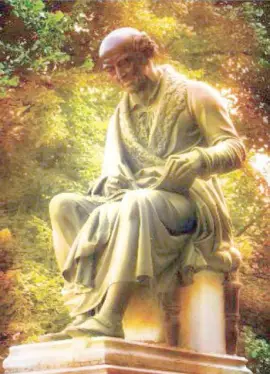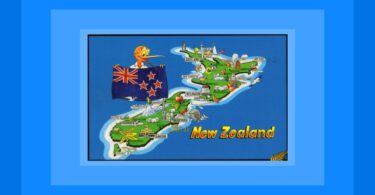Timeline of Materia Medica in Hahnemann’s Era
1790 – Upon Hahnemann’s realization of a like-cures-like principle in the case of Cinchona bark in the treatment of Malaria, his idea roused development of a reformed materia medica, containing pure observations on the effects of medicines on the healthy state. Regarding investigation of the medicine, in an article in the Hufeland’s Journal, Hahnemann said: “How near we are to the discovery that the only way to cure diseases easily, quickly and lastingly is shown to us quite clearly and simply by the Preserver of mankind. It lies, partly in the investigation of the whole symptomatic conception of every attack of disease and partly in the search for a cure suitable in every case. This should be the one medicine above all others, which can most perfectly stimulate all the pathological conditions, and which the careful doctor selects to cure. And yet such a medium should be administered not in large doses but only in the smallest, because in using it homeopathically, that is, therapeutically, and with really curative purpose, we do not require its complete disease-producing potency but only the tendency in that direction. I feel happy to be the first to call attention to this most rational and perfect of curative methods.”
1799 – Hahnemann’s first hints of dilutions are to be found in the translation of the second part of the Edinburgh Dispensatorium. Silver Nitrate was prescribed in doses of 2 grams; however Hahnemann considered that too strong, and suggested a much diluted preparation.
1801 – Hahnemann gave the first detailed description about dilution and succussion in his essay about Scarlet Fever, titled: Cure and Prevention of Scarlet Fever.
1805 – Hahnemann’s Fragmenta, a collection of 27 medicinal proving, was published for the first time in Latin. In Fragmenta, Hahneman numbered symptoms on each page. He then recorded the situations and times in several footnotes to the symptoms; he used differentiating type to point to degree of symptom certainty, and as well listing his own observations separately from the observations of others.
1806 – Hahnemann completed his translation of the Albrecht von Haller’s Materia Medica of plants, together with their economic and technical use, in French. The full title shows the significance of this work, in which 462 plants are described in comprehensive, characteristic details.
1810 – Hahnemann issued the first edition of Organon of Rational Medicine. He first mentions the word Homeopathy in Organon. The five editions of the Organon were published during the lifetime of Hahnemann. He left the notes for a sixth edition at his death. Finally in the early part of 1920, after several difficult attempts, Dr. Richard Haehl succeed in producing Hahnemann’s copy of the sixth edition of Organon with the aid and financial support of Dr. William Boericke.
1811 – The first edition of Reine Arzneimittellehre was published in six sequential volumes by Arnold in Dresden over ten years from 1811 to 1821. In 1880 a new English translation was done by Dudgeon under the title Materia Medica Pura. The Reine Arzneimittellehre expanded to six volumes with the provings records of 65 medicines. In his Materia Medica Pura, Hahnemann separated his own symptom observations from the symptoms by others.
Dr. Hahnemann also formed a group from his students, and designated the group as a Union of Provers of Medicine. These people were: Karl Franz who participated in provings of 37 medicines, including 1900 symptoms; Gustav Gross who helped in proving of 42 medicines, including 2380 symptoms; Franz Hartmann who helped in proving 28 medicines, including 880 symptoms; Christian Hornburg proving 24 medicines, including 750 symptoms; Christian Langhammer proving 47 medicines, including 1600 symptoms; Ernst Rückert in 8 medicines, including 100 symptoms; Johann Stapf helped in proving of 43 medicines, including 1000 symptoms; and William Wislicenus in the proving of 25 medicines, including 840 symptoms. Hahnemann examined every report of the group carefully and with exacting inspection. Everyone had solemnly to affirm before the group that what he had written was the truth and nothing but the truth. Other than the eight people in this group, many other people including some of his friends, followers and students helped in provings also.
1816 – First orientation to the 30C potency in the second volume of the Materia Medica Pura.
1822 – The second edition of the Materia Medica was also published in six parts by Arnold from 1822 to 1827, the same arrangement being observed. The third edition of the Materia Medica was published in only two volumes in 1830 and 1833. In these the observations are all arranged together and numbered continuously. None of the medicines in these books are arranged alphabetically.
1828 – The 1st edition of Die Chronischen Krankheiten was published, and then four consecutive volumes between 1828 till 1830. In 1896 a new English translation was done by Tafel under the title The Chronic Diseases. The Die Chronischen Krankheiten expanded to five volumes with 47 medicines in total. From these 47 medicines, 17 of them were integrated from Reine Arzneimittellehre that brings the total number of medicines contributed by Dr. Hahnemann to 95. In the Chronic Diseases, Dr. Hahnemann included his own symptoms, those of his provers and also those obtained from other sources in one arrangement, and numbers them continuously.
Bibliography:
Fragmenta, Fragmenta de Viribus Medicamentorum Positivis Sive in Sano Humanis Corpore Observatis, J.A.Barth, Leipzig, 1805.
Reine Arzneimittellehre, 1825-1833 Arnold, Leipzig.
Materia Medica Pura, translation by R.E.Dudgeon, 1880, Indian reprint, B.Jain, Delhi, 1990.
Die Chronischen Krankheiten, Heilung, Leipzig, 1835-1839.






